We're standing outside the house of Janet McKay, LEAF’s Executive Director, as she takes on her latest project - the trees in her own backyard. For a while she’s known the five black locusts are in need of some TLC, but as she stands with black mittens to her mouth I can tell she wasn’t expecting so much to come down. Brian Volz, another arborist on Ryan’s crew assures her it’s for the best. He hands me a cookie (the technical term for a cross section of a tree). “That branch is about 45 - which puts the tree at well over a hundred.” Wild.
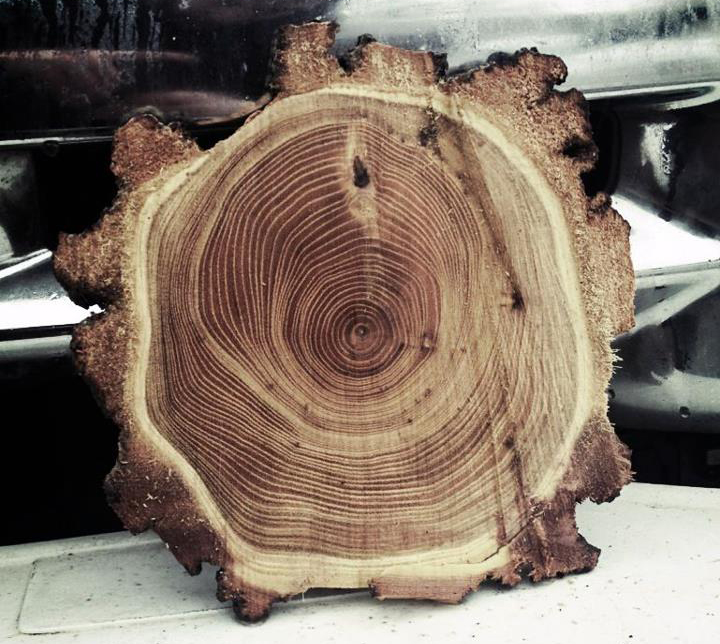
A moment earlier it hung over the roof of the Baptist Church next door. It’s clear this decision is as much about being a good neighbour - making sure the stately trees do not interfere with the well-attended community hub – as it is about preventative maintenance to protect her own home.
When Ryan gets his feet back on the ground, he leans against a truck emblazoned with the silhouette of a wind-swept white pine and the bright white and pale green of "Karmatree Inc." He takes off his gear, looks closely on the cuts he’s made all morning and introduces himself. I ask why most people hire an arborist, and about the top reasons people should prune their trees.
1. “Tree maintenance and health should always be front and center.” People think the tree just grows and shouldn’t be interfered with. But removing dead, damaged or diseased limbs is crucial, especially in an urban environment. A trained arborist will have an eye for monitoring any signs of disease. It doesn’t occur to people to do anything to the tree unless it’s doing damage – to their house. Preventative pruning ensures trees are safe and storm-ready.
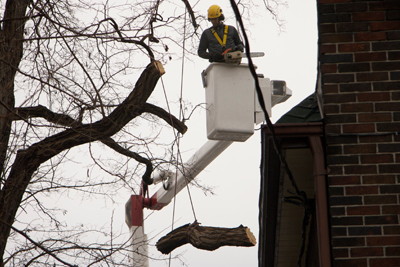
2. “Aesthetics for that formal look.” Some prefer a tree to be balanced with nice shape and form. “But we also get a fair amount of correcting unattractive pruning cuts from amateur jobs.” Improper elevating, the technical term for removing the lower limbs, can leave big stubs behind. “Where you make a cut is so important – large stubs aren’t only unattractive, but can be a host for pests and disease. Cut too close and it’s called a flush cut, which can take a long time to heal, or may never heal at all.”
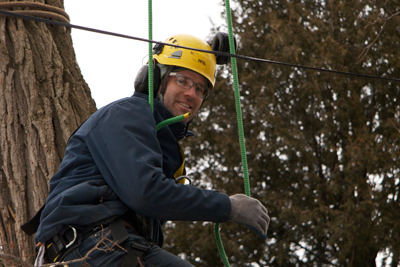
3. “Safety.” Some trees can’t be pruned because of trunk integrity. Trees should be inspected and pruned for safety if sections are too heavy, too large or the wood is decayed. Large pieces of trees falling can cause damage to property, or even death. “With this tree there were extensive cavities. Large cavities can be a big problem. But we’ve been called in emergency situations where a tree had cracked in half. We’ve also showed up only to find that the tree has already fallen over. We’ve refused to go up when it’s unsafe. And in some cases, you may have to hire a crane or even just cut the tree from the base and let it fall” – old school. This is, of course, very hard in a downtown urban setting like Toronto. “You clear everything you can out of the way and clean up after.”
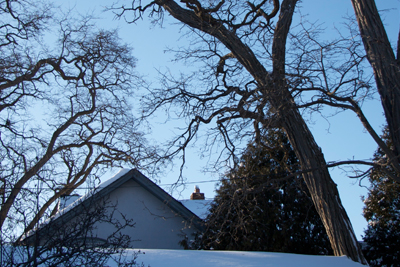
4. “To get more sunlight, improve their vista or get more sun on their garden.” People who want more light in their kitchens or for their vegetables and flower gardens usually want thinning. You have to be careful, though - it may work in the short term, but the canopy may eventually respond by producing more foliage. And doing it every year - say for sun on your swimming pool - can do a lot of damage to the tree, put it into stress and may even kill the tree. The most common solution is to take off a few low limbs, elevate the canopy and perform some corrective pruning on the rest. It should be noted that vista pruning – cutting trees to see the lake or downtown - is not approved by the Toronto bylaws. Especially in ravines. “We have an ethical standard and won’t do it.”
5. “Flower and fruit production.” Cutting back branches can encourage growth. Trees are constantly self-engineering. “There is no such thing as unnecessary when it comes to leaves and branches.” So the automatic response is to replace the lost “food factories” to support the major root system we sometimes forget. When a tree is stressed from this loss, its response is to propagate – to create seed which can mean fruit and flower. “I’ve seen situations where they’ve been asked to cut back quite a bit and the next year the tree grows like a weed - more than it ever has.”
My eye moves to the pile of felled branches, and the larger sections of a rotting trunk that had come down from Janet’s locusts. It is a frequent and unfortunate thing that wood from pruning and removals ends up in a private dump - sorted for clean fill, but little more. Companies have to pay for the sorting and that cost gets passed on to the customer.
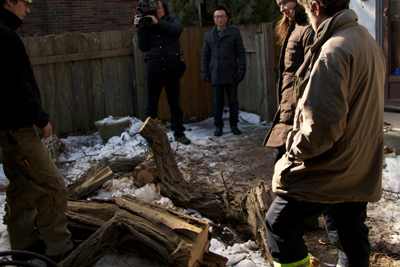
I can’t help but think that so much more could be realized from this historic wood, especially when it comes to trees that have been a part of your life for so long. I shouldn’t have been surprised when I found out that Janet had uncovered a creative way to use her wood, keeping it on site as mulch for her garden and creating furniture with some of the larger sections. But that is another story…
At LEAF, we recently began offering Tree Maintenance Packages for the trees we've planted through our Backyard Tree Planting Program. It aims to help people get their get their trees on the right track with a five-year program and stresses the importance of preventative maintenance. This includes a yearly application of mulch, tree health assessment and minor pruning as needed. In year three, four or five, we conduct structural pruning to ensure a strong growing structure and healthy future for the trees.
Of course, Janet's black locusts were planted way before LEAF was even a dream and the maximum height LEAF arborists will work with is 15 feet - much shorter than the giants Ryan is used to. I thanked him for the chat, and he ascended back up into the sky as his chainsaw safely dangled below.
Correction: the original post referred to a "flesh cut" rather than the correct term "flush cut." There was a time when flush cutting was standard practice but research proved it was detrimental so the cut location is now made at or just beyond the branch collar.
